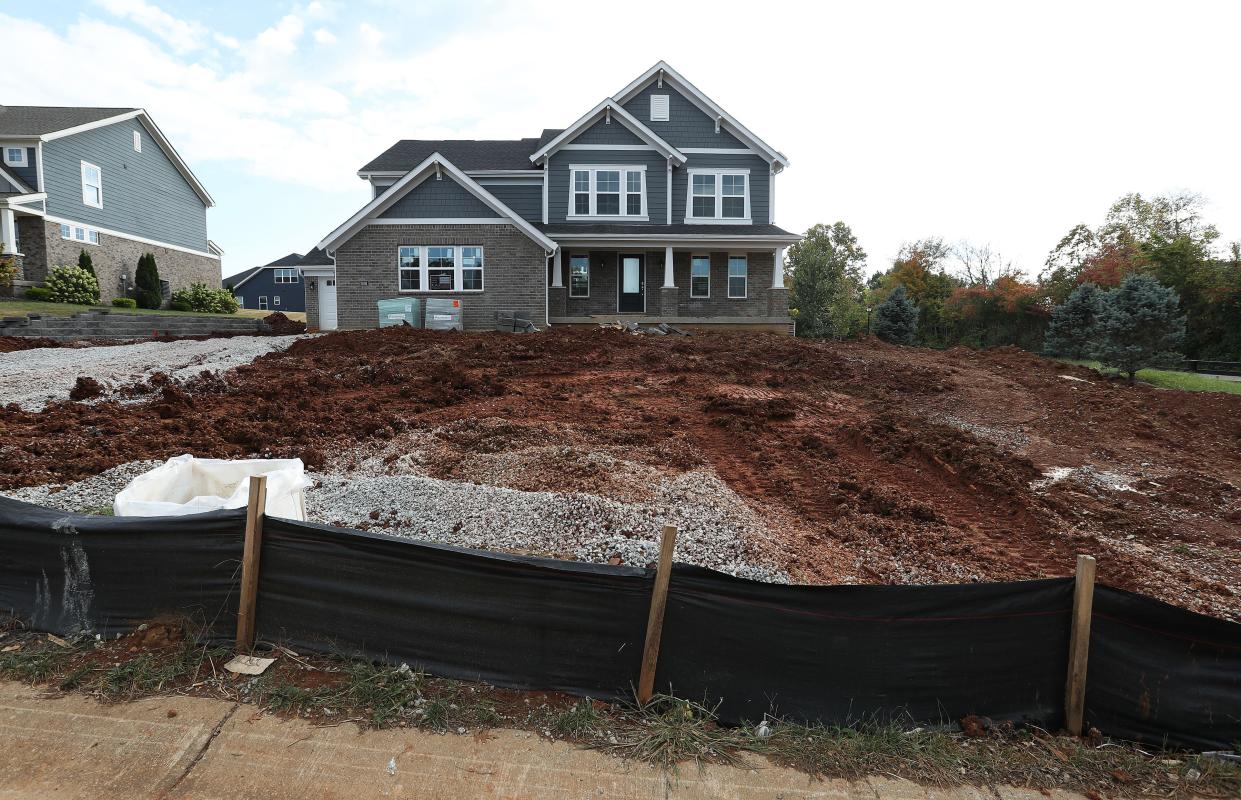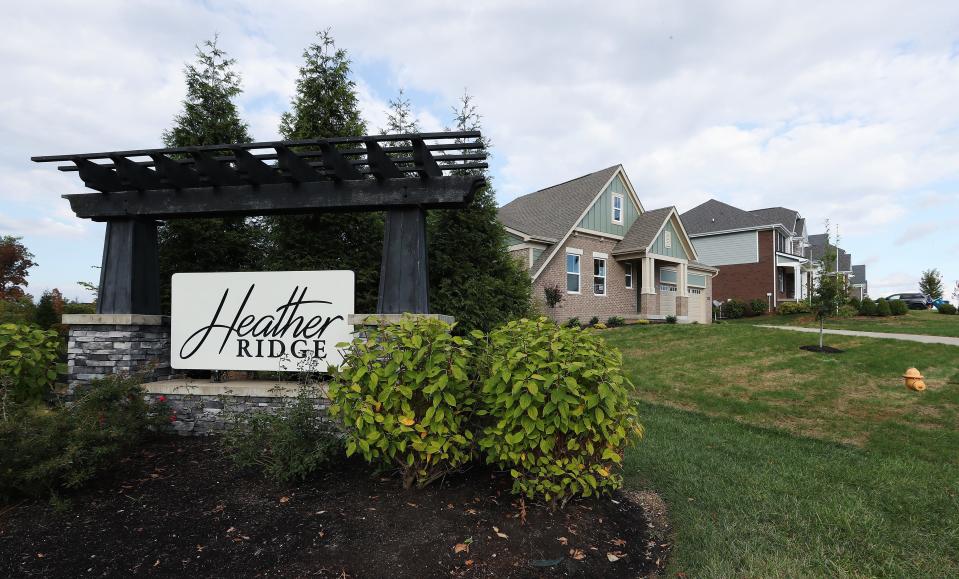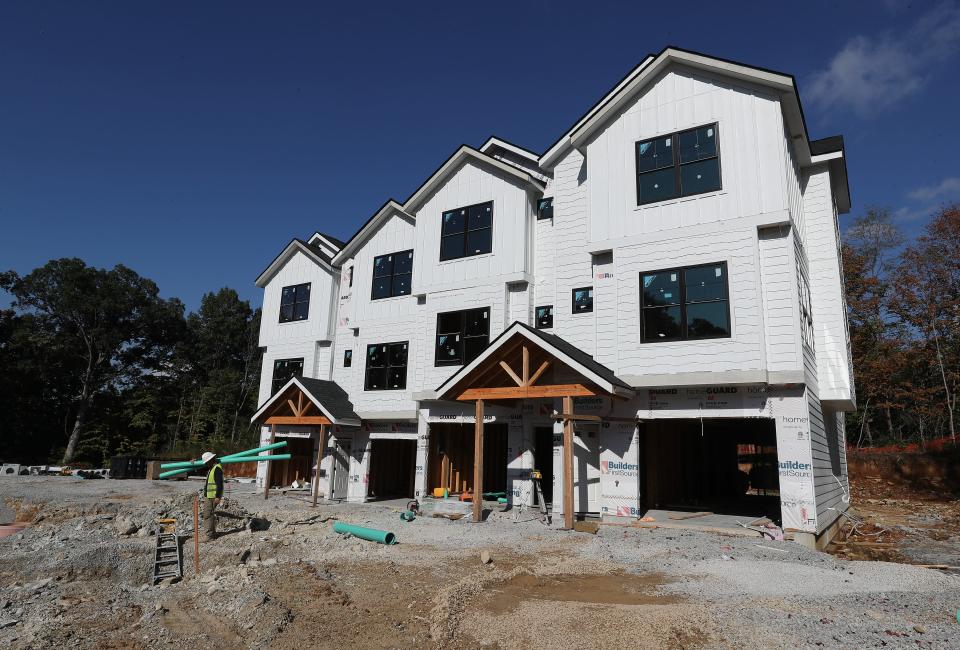How does Oldham prevent school crowding? By limiting home construction

When Jim Urban joined Oldham County's planning office in 1998, the talk of the day was overcrowded schools.
The rural community's population had been growing quickly for decades, spurred in part by court-ordered busing in Jefferson County that led some families to move north. And schools that were once below capacity had become overwhelmed, with some converting arts and craft spaces into makeshift classrooms, Urban said.
Forums were held to address the problem, and the planning office launched a growth management task force to identify a solution.
They eventually found one in a state statute that lets communities regulate development based on available public resources, including highways, sewers and schools.
By the early 2000s, Oldham's "school capacity standard" was born.
In the 20 years since, the regulation has been used to limit construction of new homes based on the capacity of nearby schools, giving Oldham's Board of Education more time to plan for needed expansions.
Today, officials say the policy has been a success, helping the county manage its growth while maintaining its high-caliber schools. However, some in the community say Oldham is in a better position to handle growth than it was two decades ago, and it's time to reconsider the policy as the county continues to attract more economic development and multi-family housing.
"We're now at a point where capacities have evened out" and more funds are available to build new schools, said Walt Schumm, an Oldham County developer and former school board member. "... When the (housing) market comes back, it's going to become an issue again."
How Oldham's school capacity policy works
Oldham's school capacity standard sets a cap on how many units an individual development can build each year, based on the capacity of schools serving that area.
The regulation has historically been focused on new single-family homes, and developers can only receive permission to build between 15 and 35 units per year, using a capacity calculation created by the Board of Education.
Take, for example, a developer who wants to build a 75-unit subdivision in Prospect, where students would attend Goshen Elementary, North Oldham Middle and North Oldham High. All three schools are operating below 100% capacity, so the developer would likely be allowed to build the maximum 35 units per year, with all homes capable of being constructed within three years.
You might like: How Oldham County became a multi-million dollar tourism destination
If the developer wanted to move the same subdivision to an area in Crestwood, where kids would attend Kenwood Station Elementary, South Oldham Middle and South Oldham High, however, the annual permitted units would likely be reduced. That's because two of the schools are already above their capacity.
Urban said the regulation is part of a larger review process that takes other public services into account, including water and sewer lines needed to support a new development. And he has not seen any project withdrawn because of the school capacity standard.
"Once (developers) understand what the requirements are, they can consider phasing a development differently, but it typically doesn't stop them," he said.

What the regulation means for Oldham County Schools
Prior to the regulation, Oldham County Schools was never sure what to expect.
Some years the district's enrollment increased by 300 students, while other years it went up 600 − a level of unsustainable growth that could have almost required the construction of a new elementary school every year, said Michael Williams, director of pupil personnel.
"It's not just let's widen this road and we're done," he said of what's needed to handle such an influx. "For us, it's a multimillion-dollar investment to build a new school. The last numbers I saw on a high school was above $100 million."
By implementing the school capacity standard, Williams said, Oldham County's Board of Education has been able to better anticipate where growth will take place and start planning for new schools years before they're needed.
"It gives us the planning tool to say we need a new school here based on what's coming, but we don't need it for four years," he said. "For us to put a school in the ground is about two-and-a-half to three years."
The regulation, of course, can't control the exact number of new students entering the district each year.
But "it's a benefit to us to know to expect this many units," Williams said. "Historically, the numbers are pretty accurate of how many kids we get out of each (development)."
Where apartments fit in
The school capacity standard has changed over the years as needs in Oldham have shifted.
But one of the largest changes is expected to come this month, when apartments are added to the regulation for the first time.
In June, Oldham Fiscal Court members voted in favor of capping new multi-family units at 75 per development per year, with exemptions that could allow a development build up to 125 units per year.
The change must also be approved by three city governments that are part of Oldham's planning unit − La Grange, Crestwood and Pewee Valley − before it's adopted, Urban said.
"Multi-family housing is coming in more and more to Oldham," he said. "It's about housing in general and the number of students coming out of those units, whatever they are, whether it's apartments, condos or houses."
More: Why Oldham Reserve developers think the 1,000-acre campus is on the cusp of big moves
Williams said one major development that drove the change is Clore Station − a proposed mixed-use community commonly compared to Norton Commons.
The development calls for thousands of new single-family homes, townhomes and apartments across 485 acres in Crestwood, with walkable shops and parks throughout the space.
"Clore Station is almost 3,000 units, looking at an almost 20-year build out," Williams said. Under the school capacity standard, "it's going to be phased out so long ... we can plan on that."
Schumm, who's worked in construction in Oldham for 30 years, is building a 76-unit complex called ParkVue Townhomes in Crestwood and said land and infrastructure costs have driven more developers to pursue multi-family homes.

The lead time to construct a multi-family building is six to eight months, he said, and planning around how many units can be built each year could become an issue.
"I think it's time for us to revisit (the standard) and see if there isn't, given the developments we have and those that are proposed, if there isn't a better system or better formula that can be used," he said.
Michael Logsdon, an Oldham County magistrate representing Pewee Valley, said he was surprised to learn other communities don't have similar regulations.
He's worked in real estate for 37 years and said home construction could soon slow amid high interest rates, reducing the need for the regulation. But development is cyclical, and the school capacity standard is helpful to manage growth in years of increased construction.
"You're either growing or you're dying," Logsdon said. "What you have to do is balance that with smart growth. School capacity, to me, is the best way to control that so you don't have so much housing being built that the school system can't handle."
Reach reporter Bailey Loosemore at bloosemore@courier-journal.com, 502-582-4646 or on Twitter @bloosemore.
This article originally appeared on Louisville Courier Journal: Kentucky county limits home construction to prevent school crowding

